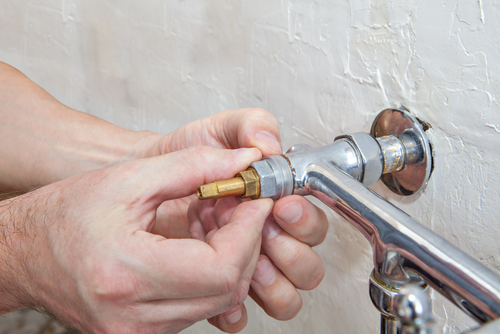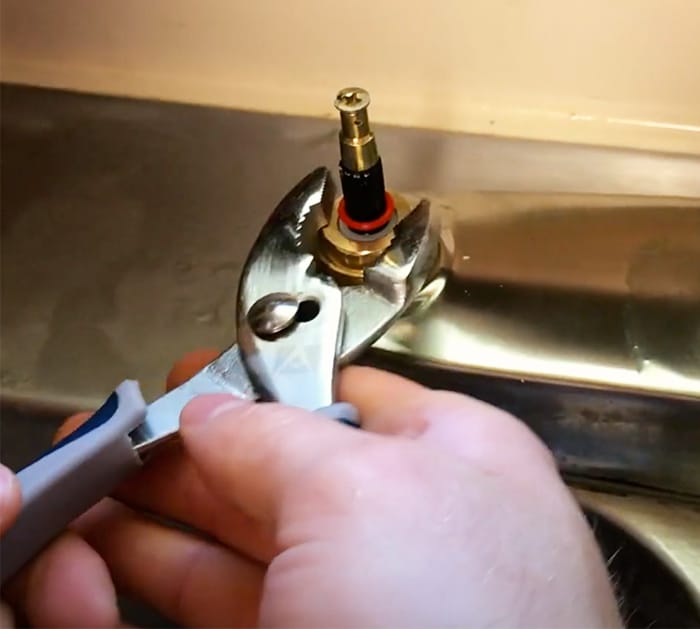Why It's Vital to Fix a Broken Faucet
Why It's Vital to Fix a Broken Faucet
Blog Article
This article below pertaining to Why Are My Faucets Dripping (And Can I Fix It Myself)? is rather intriguing. You should look it over.

Trickling faucets might appear like a small hassle, yet their impact exceeds simply the annoyance of the audio. From drainage to incurring unnecessary monetary prices and wellness risks, disregarding a trickling faucet can lead to various repercussions. In this post, we'll explore why it's critical to resolve this usual house concern without delay and properly.
Wastefulness of Water
Ecological Influence
Leaking faucets contribute dramatically to water wastage. According to the Epa (EPA), a solitary faucet dripping at one drip per secondly can throw away more than 3,000 gallons of water per year. This not only strains water resources yet additionally impacts communities and wildlife dependent on them.
Financial Prices
Boosted Water Bills
Beyond the ecological impact, trickling faucets can blow up water expenses considerably. The collected wastage gradually converts into greater energy expenditures, which can have been prevented with prompt repairs.
Potential Property Damage
Furthermore, extended trickling can lead to damage to fixtures and surface areas bordering the faucet. Water buildup can create discoloration, corrosion, and even architectural concerns if left ignored, leading to additional repair prices.
Health and wellness Concerns
Mold And Mildew and Mildew Growth
The consistent existence of moisture from a leaking faucet produces a perfect setting for mold and mold growth. These fungi not only endanger indoor air quality but additionally present health dangers, specifically for individuals with breathing problems or allergic reactions.
Waterborne Diseases
Stagnant water in dripping faucets can end up being a breeding place for bacteria and other pathogens, enhancing the danger of waterborne illness. Impurities such as Legionella microorganisms grow in stationary water, possibly bring about serious illnesses when consumed or inhaled.
DIY vs. Expert Fixing
Advantages and disadvantages of Do It Yourself Repair
While some might try to repair a leaking tap themselves, do it yourself repair services feature their very own set of difficulties. Without correct expertise and devices, DIY attempts can intensify the problem or cause insufficient repair services, prolonging the problem.
Benefits of Hiring a Professional Plumber
Hiring a professional plumber ensures that the underlying cause of the dripping tap is resolved properly. Plumbing professionals have the know-how and devices to detect and fix faucet concerns efficiently, saving time and reducing the threat of additional damage.
Step-by-Step Overview to Dealing With a Dripping Tap
Tools Required
Prior to attempting to fix a trickling faucet, gather the essential tools, consisting of an adjustable wrench, screwdrivers, substitute parts (such as washing machines or cartridges), and plumber's tape.
Typical Tap Issues and Their Solutions
Identify the kind of tap and the specific problem causing the drip. Usual troubles consist of damaged washers, corroded shutoff seats, or damaged O-rings. Describe maker directions or online tutorials for detailed assistance on repairs.
Safety nets
Routine Upkeep Tips
To avoid dripping taps, carry out regular maintenance such as cleansing aerators, examining for leakages, and replacing damaged components promptly. In addition, consider setting up water-saving tools or upgrading to a lot more effective components.
Importance of Prompt Repair Works
Resolving dripping faucets as soon as they're observed protects against more water waste and prospective damage, ultimately conserving both water and cash in the future.
Effect On Building Worth
Perception of Well-Maintained Property
Keeping a building in good condition, including resolving maintenance concerns like leaking faucets, improves its perceived value and worth among prospective buyers or renters.
Influence on Resale Value
Properties with well-kept plumbing components, consisting of faucets, command higher resale worths in the property market. Addressing dripping faucets can add to a favorable impact throughout residential or commercial property evaluations and settlements.
Ecological Obligation
Private Contribution to Preservation
Taking obligation for dealing with trickling faucets lines up with broader initiatives towards water preservation and environmental sustainability. Every individual's actions collectively make a considerable effect on maintaining priceless sources.
Lasting Living Practices
By focusing on punctual repairs and adopting water-saving routines, people contribute to sustainable living practices that benefit both present and future generations.
Verdict
Resolving a trickling tap exceeds plain comfort; it's an important step towards conserving water, decreasing financial expenses, and securing wellness and home. Whether through DIY repair work or specialist assistance, taking action to take care of leaking taps is a little yet impactful means to promote liable stewardship of resources and add to a much healthier, much more lasting future.
How to Fix a Leaky Faucet: Step-by-Step Repair Guide
A leaky faucet may seem like a simple annoyance, but if it's not fixed promptly, that leak could cost hundreds to potentially thousands. From water damage to mold, mildew, and high water bills, even a tiny leak can be catastrophic if left unattended. Damage like this can even affect the overall value of your home, so it's important to take the right approach for leaky faucet repair. You may need the help of a plumber in some cases, but we've got a few tips you can try on how to fix a leaky faucet before calling the pros.
Four Faucet Types
When you're learning how to fix a leaky faucet, the first step is knowing what kind of faucet you're working with! There are four common types.
Cartridge Faucets
Cartridge faucets come in one- or two-handled varieties. In one-handled cartridge faucets, hot and cold water combines in a single cartridge. In the two-handled versions, hot and cold water are controlled separately and mixed in the faucet.
Ball Faucets
Ball faucets have a single lever you push up and down to adjust the pressure and rotate to change the temperature. A slotted metal ball controls the amount of water allowed into the spout.
Compression Washer Faucets
They're the oldest type of faucet, but they're still used in many homes — especially older ones. Compression faucets have two separate handles that, when turned, raise or lower the washer that seals a water valve. This valve stops water from flowing through the faucet when it is turned off.
Disc Faucets
Disc faucets rarely need to be repaired due to their maintenance-free design. The water flow is controlled by two discs — the upper one raises and lowers against a fixed lower disc, creating a watertight seal. If your disc faucet starts leaking, you may need to replace the seals or clean residue buildup from the inlets.
Fixing a Leaky Faucet
Step 1: Turn Off the Water
Whether you're learning how to fix a leaky bathtub faucet or how to fix a leaky kitchen faucet, always turn off the water supply to your working area when you're fixing a leak. The last thing you want is a flood added to your list of things to fix.
Look for the shutoff valves below your sink or around the tub and turn them clockwise to stop the water flow. If your faucet doesn't have shutoff valves, you may need to turn off the water for the whole house. Check to make sure it's off by turning the faucet on. If nothing comes out, you're ready to start the repair.
Step 2: Take Apart the Faucet
How you disassemble your faucet depends on the type of fixture you have. You can use a flathead screwdriver to remove the caps on top of the handle or handles for cartridge and compression faucets. Inside, you should see handle screws. Unscrew these with a screwdriver to remove the handle.
Disc- and ball-style faucets will typically have an inlet screw near the handle, and removing that will reveal the interior of the faucet.
Detach the Valve Stem
For cartridge- and compression-style faucets, you'll see the inner valve stem or cartridge once you remove the faucet handles. If you have a compression faucet, unscrew the brass valve stem. If you have a cartridge faucet, pull out the cartridge. If your cartridge has been in place for a while, it may require some tools or extra force to remove it due to mineral deposits.
Examine and Replace Parts
Once you've removed the parts, check them out to confirm what needs to be replaced. You may see corroded rubber washers, O-rings, stems, or cartridges. On a ball-style faucet, check the seats and springs for damage.
If you need to repair a leaky disc faucet, check the inlet and seals on the lower disc.
Once you determine what parts must be replaced, visit your local hardware store. Bring the damaged parts with you to ensure you can purchase the correct components to replace them.
Clean Valves and Faucet Cavity
If you've removed a stem or cartridge, you may notice mineral buildup in the faucet's threads. Use white vinegar to clean the valve seat by soaking it for a few minutes, then scrub it away with a soft toothbrush and rinse with warm water. You can also clean the interior of the faucet in the same way.
Reassemble the Faucet
Once your faucet is cleaned and the required parts have been replaced, it's time to reassemble it. Put the pieces back together and slowly turn the water supply back on. Doing this slowly is crucial because too much initial water pressure can damage the new hardware you've just installed.
https://homewarranty.firstam.com/blog/how-to-fix-leaky-faucet

We had been made aware of that write-up about Leaky Faucets: Why They Happen & What to Do About Them from a buddy on our other web property. Are you aware of another person who is truly interested in the niche? Why not share it. Thank you for taking the time to read it.
Report this page